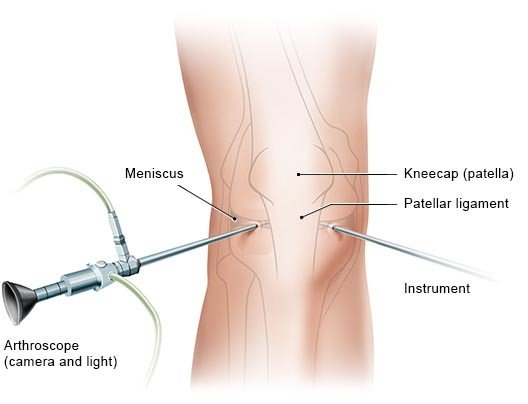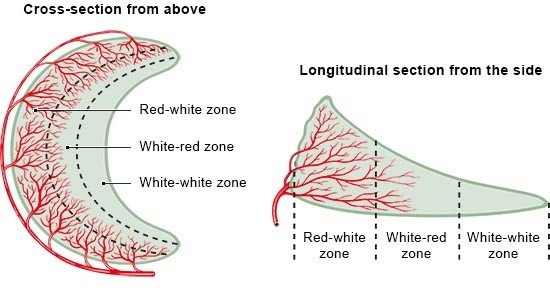Abram SG, Judge A, Beard DJ et al. Adverse outcomes after arthroscopic partial meniscectomy: a study of 700 000 procedures in the national Hospital Episode Statistics database for England. Lancet 2018; 392(10160): 2194-2202.
Falck-Ytter Y, Francis CW, Johanson NA et al. Prevention of VTE in orthopedic surgery patients: Antithrombotic Therapy and Prevention of Thrombosis, 9th ed: American College of Chest Physicians Evidence-Based Clinical Practice Guidelines. Chest 2012; 141(2 Suppl): e278S-e325S.
Mutsaerts EL, van Eck CF, van de Graaf VA et al. Surgical interventions for meniscal tears: a closer look at the evidence. Arch Orthop Trauma Surg 2016; 136(3): 361-370.
Nepple JJ, Dunn WR, Wright RW. Meniscal repair outcomes at greater than five years: a systematic literature review and meta-analysis. J Bone Joint Surg Am 2012; 94(24): 2222-2227.
O'Connor D, Johnston RV, Brignardello-Petersen R et al. Arthroscopic surgery for degenerative knee disease (osteoarthritis including degenerative meniscal tears). Cochrane Database Syst Rev 2022; (3): CD014328.
Paxton ES, Stock MV, Brophy RH. Meniscal repair versus partial meniscectomy: a systematic review comparing reoperation rates and clinical outcomes. Arthroscopy 2011; 27(9): 1275-1288.
Perrotta C, Chahla J, Badariotti G et al. Interventions for preventing venous thromboembolism in adults undergoing knee arthroscopy. Cochrane Database Syst Rev 2020; (5): CD005259.
Pihl K, Roos EM, Nissen N et al. Over-optimistic patient expectations of recovery and leisure activities after arthroscopic meniscus surgery. Acta Orthop 2016; 87(6): 615-621.
Siemieniuk RA, Harris IA, Agoritsas T et al. Arthroscopic surgery for degenerative knee arthritis and meniscal tears: a clinical practice guideline. BMJ 2017; 357: j1982.
Skou ST, Lind M, Holmich P et al. Study protocol for a randomised controlled trial of meniscal surgery compared with exercise and patient education for treatment of meniscal tears in young adults. BMJ Open 2017; 7(8): e017436.
Skou ST, Pihl K, Nissen N et al. Patient-reported symptoms and changes up to 1 year after meniscal surgery. Acta Orthop 2018; 89(3): 336-344.
Tengrootenhuysen M, Meermans G, Pittoors K et al. Long-term outcome after meniscal repair. Knee Surg Sports Traumatol Arthrosc 2011; 19(2): 236-241.
Thorlund JB, Englund M, Christensen R et al. Patient reported outcomes in patients undergoing arthroscopic partial meniscectomy for traumatic or degenerative meniscal tears: comparative prospective cohort study. BMJ 2017; 356: j356.
Van Adrichem RA, Nemeth B, Algra A et al. Thromboprophylaxis after Knee Arthroscopy and Lower-Leg Casting. N Engl J Med 2017; 376(6): 515-525.
IQWiG health information is written with the aim of helping people understand the advantages and disadvantages of the main treatment options and health care services.
Because IQWiG is a German institute, some of the information provided here is specific to the German health care system. The suitability of any of the described options in an individual case can be determined by talking to a doctor. informedhealth.org can provide support for talks with doctors and other medical professionals, but cannot replace them. We do not offer individual consultations.
Our information is based on the results of good-quality studies. It is written by a team of health care professionals, scientists and editors, and reviewed by external experts. You can find a detailed description of how our health information is produced and updated in our methods.



